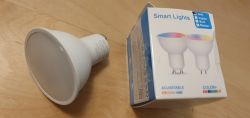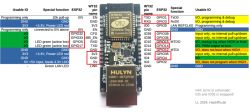Hey, such a problem:
Equipment as in the title. The system controls the watering of the garden. I'm going away for a fortnight and need to run the watering 2-3 times.
There is a primitive server set up on the Adruino. Starting the watering is done by sending a command locally (example:) 192.168.1.1:75/automat_start.
The server shows the current status etc.
Now how to do this from over seas? Supla won't work on an Arduino UNO (min. Arduino mega), while BLYNK takes up more than 100% of the memory together with my server, openHAB similarly....
I'm wondering if it's somehow possible to send such a command to the internal network (the same as the Arduino) from the SATEL control panel + ETHERNET module - I'm trying to figure it out and I don't think it's possible, but maybe?
I only need to send the command, the feedback (server preview) I don't need (does it water it I can see on the monitoring).
Any ideas on how to do this? Someone, something, anything? I have 3 weeks to come up with a solution or my lawn will wither....
Cheers!
Equipment as in the title. The system controls the watering of the garden. I'm going away for a fortnight and need to run the watering 2-3 times.
There is a primitive server set up on the Adruino. Starting the watering is done by sending a command locally (example:) 192.168.1.1:75/automat_start.
The server shows the current status etc.
Now how to do this from over seas? Supla won't work on an Arduino UNO (min. Arduino mega), while BLYNK takes up more than 100% of the memory together with my server, openHAB similarly....
I'm wondering if it's somehow possible to send such a command to the internal network (the same as the Arduino) from the SATEL control panel + ETHERNET module - I'm trying to figure it out and I don't think it's possible, but maybe?
I only need to send the command, the feedback (server preview) I don't need (does it water it I can see on the monitoring).
Any ideas on how to do this? Someone, something, anything? I have 3 weeks to come up with a solution or my lawn will wither....
Cheers!






